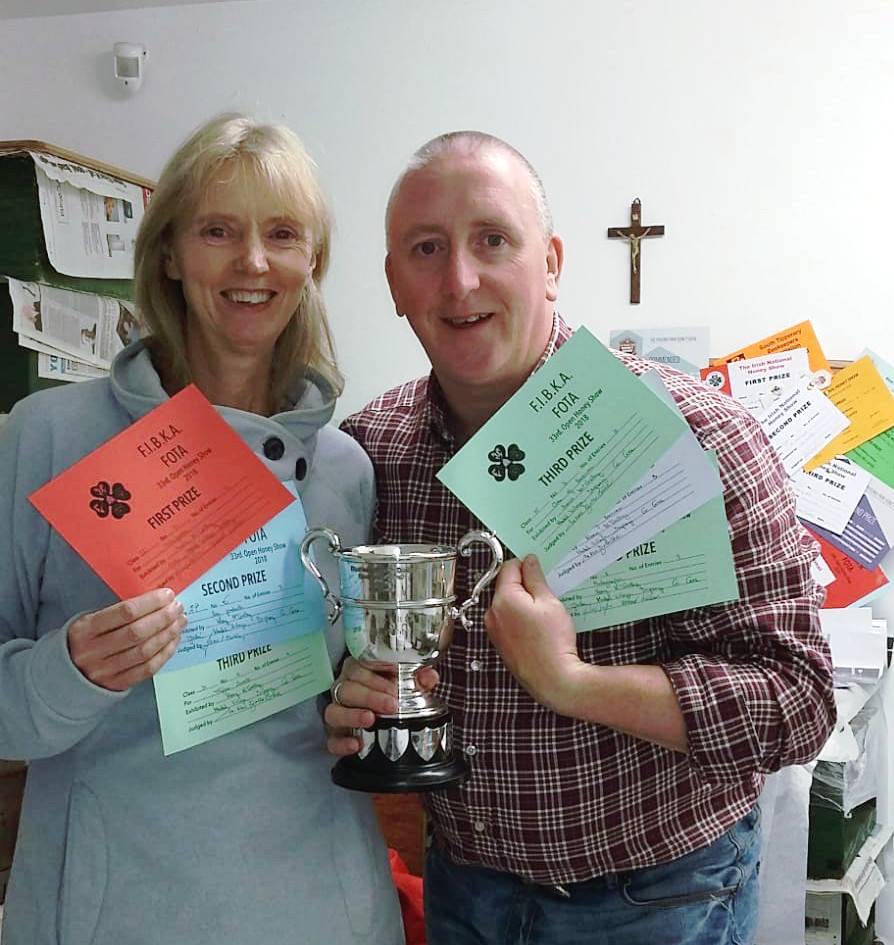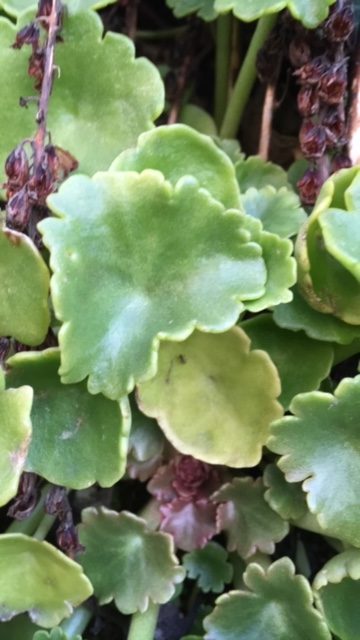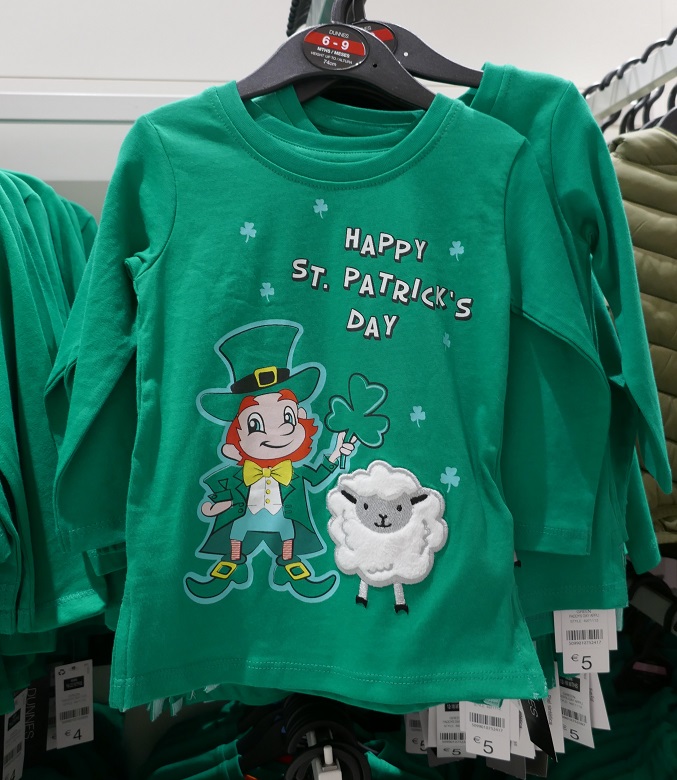Coming Soon, St Patrick’s Day.

Prize Winning Beekeepers.

Swarming Presentation.
The local beekeeping association, http://cocorkbka.org/, held a meeting in the Cork Institute of Technology while I was visiting Tricia, and we both attended. Finding the room was like running around in a maze and we were slightly late. There was a big turnout of around 40 men and 10 women for a well received lecture on swarming by Denis McCarthy. Later, I chatted to a couple of people I’d met in 2014 at Gormanston summer school near Dublin which was nice.
https://irishbeekeeping.ie/beekeeping-summer-school-gormanston-2020/
Denis’s experience shows. He delivered a talk aimed at new beekeepers but which was also of great value for all levels of beekeeping. He managed to keep a potentially large and complicated topic simple yet included swarm theories, honey bee behaviour and the practical “what to do about swarming”. I liked the animated diagrams showing how to perform a Pagden artificial swarm and I’ll be sourcing them for my own talks.
Irish Village Honey.
Denis and Mary run Irish Village Honey. Notice how they are insulating their equipment storage room with the honey show tickets covering the wall. Buying prize winning honey increases customer confidence and loyalty, and goes a long way to boosting sales.
Walks and Forage.
The rest of my holiday was about walking and noticing nature. We covered 26 miles in total and the days were mild compared with where I live in Scotland in February. Cork is farther south and much milder generally so the forage is a bit different too. I noticed masses of pink flowers like butterbur along a path beside the River Lee. My long suffering friend got out her mobile phone and downloaded an app to confirm my thoughts so we could move on. A chill wind was blowing off the Lee and we still had a fair way to go to reach Passage West where we would stop for lunch. Passage West is opposite Cobh on the Lee where The Titanic docked to take on Irish passengers.


Non Native Species.
Unlike our white butterbur, which came from Scandinavia, this winter heliotrope came over from the Mediterranean and established itself in the comfortable Cork climate. As the name suggests, the pink tufted flowers rotate their heads as they follow the path of the sun (helio). You can see the green kidney-shaped leaves which appear with the flower. Our butterbur’s leaves only appear after flowering. They are very fragrant with a hint of vanilla. The plants are dioecious meaning they are either male or female plants. The male produces pollen while the female produces nectar. These plants proliferate by vegetative regeneration so they don’t have to rely on pollination.
Victorian Gardens.
Like many plants introduced from abroad during the Victorian era of plant hunting and creating exotic gardens, these are invasive and can soon shade out native species. They love damp areas so are well suited to this habitat by the river. Beekeepers in the area will know how beneficial they are to their bees at the end of winter providing both pollen and nectar.

In the final part, I want to share a very special place of scientific interest with you. Till next time…


Well done, Denis and Mary, looking good. 🐝
Thank you, Mary and Denis. Glad you like it.